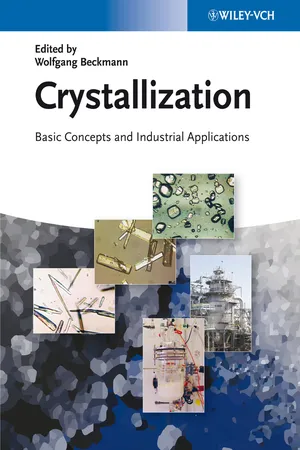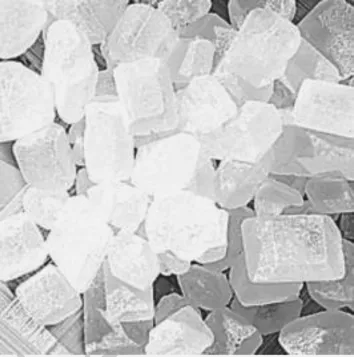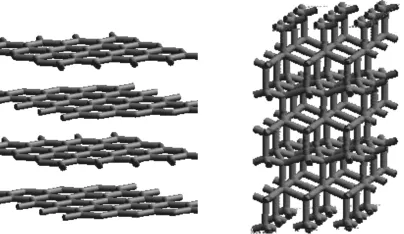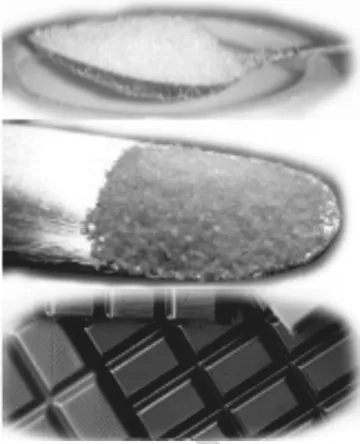
Crystallization
Basic Concepts and Industrial Applications
- English
- ePUB (mobile friendly)
- Available on iOS & Android
About This Book
Crystallization is a natural occurring process but also a process abundantly used in the industry. Crystallization can occur from a solution, from the melt or via deposition of material from the gas phase (desublimation). Crystals distinguish themself from liquids, gases and amorphous substances by the long-range order of its building blocks that entail the crystals to be formed of well-defined faces, and give rise to a large number of properties of the solid. Crystallization is used at some stage in nearly all process industries as a method of production, purification or recovery of solid materials. Crystallization is practiced on all scales: from the isolation of the first milligrams of a newly synthesized substance in the research laboratory to isolating products on the mulit-million tonne scale in industry. The book describes the breadth of crystallization operations, from isolation from a reaction broth to purification and finally to tailoring product properties. In the first section of the book, the basic mechanisms - nucleation, growth, attrition and agglomeration are introduced. It ensures an understanding of supersaturation, the driving force of crystallization. Furthermore, the solubility of the substance and its dependences on process conditions and the various techniques of crystallization and their possibilities and limitations are discussed. Last but not least, the first part includes an intensive treatment of polymorphism. The second part builds on the basics, exploring how crystallization processes can be developed, either batch-wise or continuous, from solution or from the melt. A discussion of the purification during crystallization serves as a link between the two sections, where practical aspects and an insight using theoretical concepts are combined. Mixing and its influence on the
crystallization as well as the mutual interference of down-stream processes with the crystallization are also treated. Finally, techniques to characterize the crop are discussed. The third part of the book is dedicated to accounts of actual developments and of carried-out crystallizations. Typical pitfalls and strategies to avoid these as well as the design of robust processes are presented.
Frequently asked questions
Information





| Product | Produced in | Production (t/a) |
| Sodium chloride | 2001 in the EU | 38 350 000 |
| Sugar | 2001 in the EU | 15 000 000 |
| Caprolactam | 2002 worldwide | 3 500 000 |
| Ascorbic acid | 2009 worldwide | 110 000 |
| Acetylsalicylic acid | 2008 worldwide | 35 000 |
Table of contents
- Cover
- Related Titles
- Title Page
- Copyright
- List of Contributors
- Chapter 1: Crystallization: Introduction
- Chapter 2: Mechanisms of Crystallization
- Chapter 3: Solubility and Solution Equilibria in Crystallization
- Chapter 4: Agglomeration During Crystallization
- Chapter 5: Polymorphism of Crystalline Systems
- Chapter 6: The Influence of Additives and Impurities on Crystallization
- Chapter 7: Purification by Crystallization
- Chapter 8: Characterization of Crystalline Products
- Chapter 9: Basics of Industrial Crystallization from Solution
- Chapter 10: Development of Batch Crystallizations
- Chapter 11: Continuous Crystallization
- Chapter 12: Precipitation
- Chapter 13: Mixing in Crystallization Processes
- Chapter 14: Downstream Processes
- Chapter 15: Melt Crystallization
- Chapter 16: Examples of Realized Continuous Crystallization Processes
- Chapter 17: Design Examples of Melt Crystallization
- Index